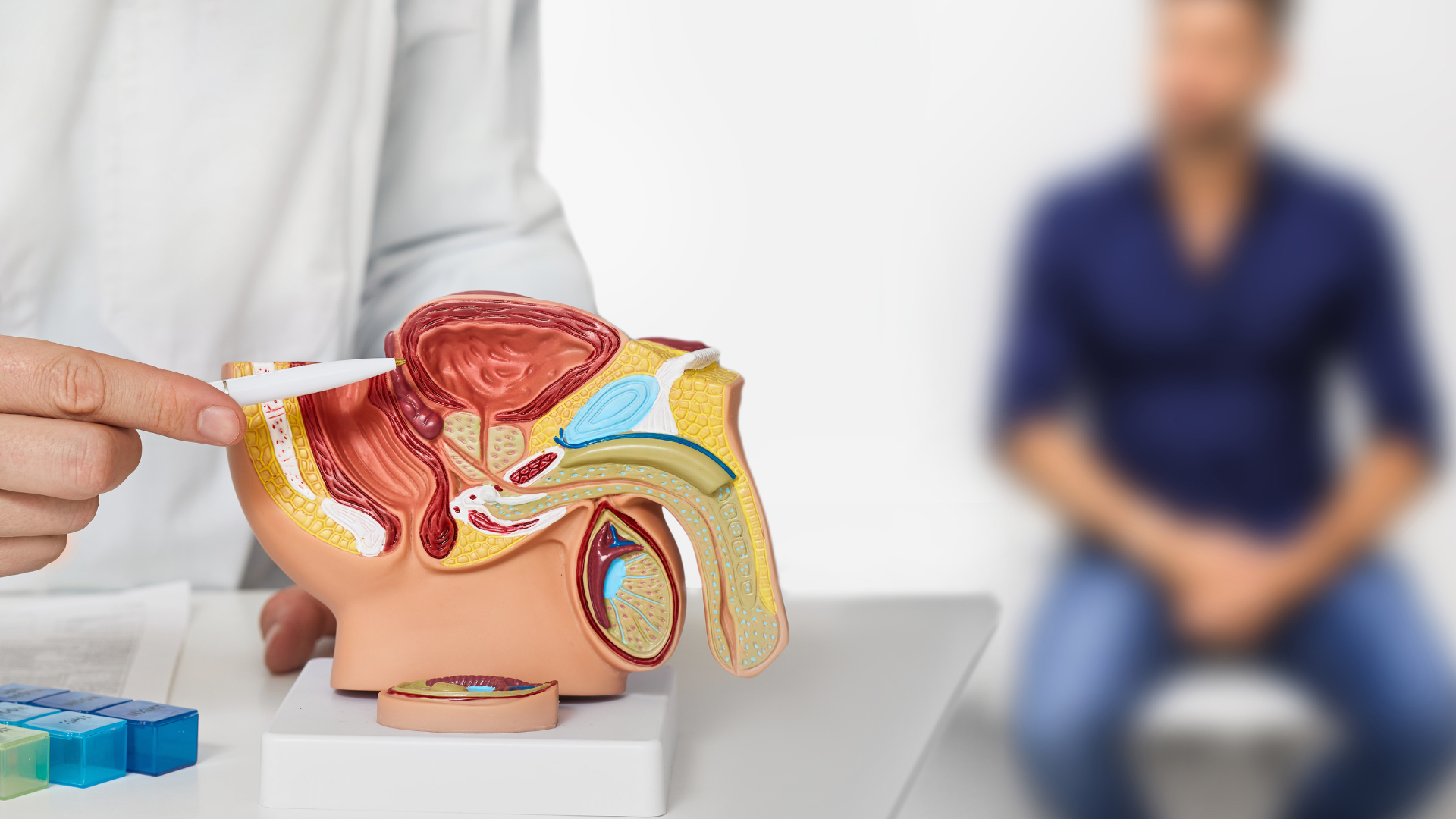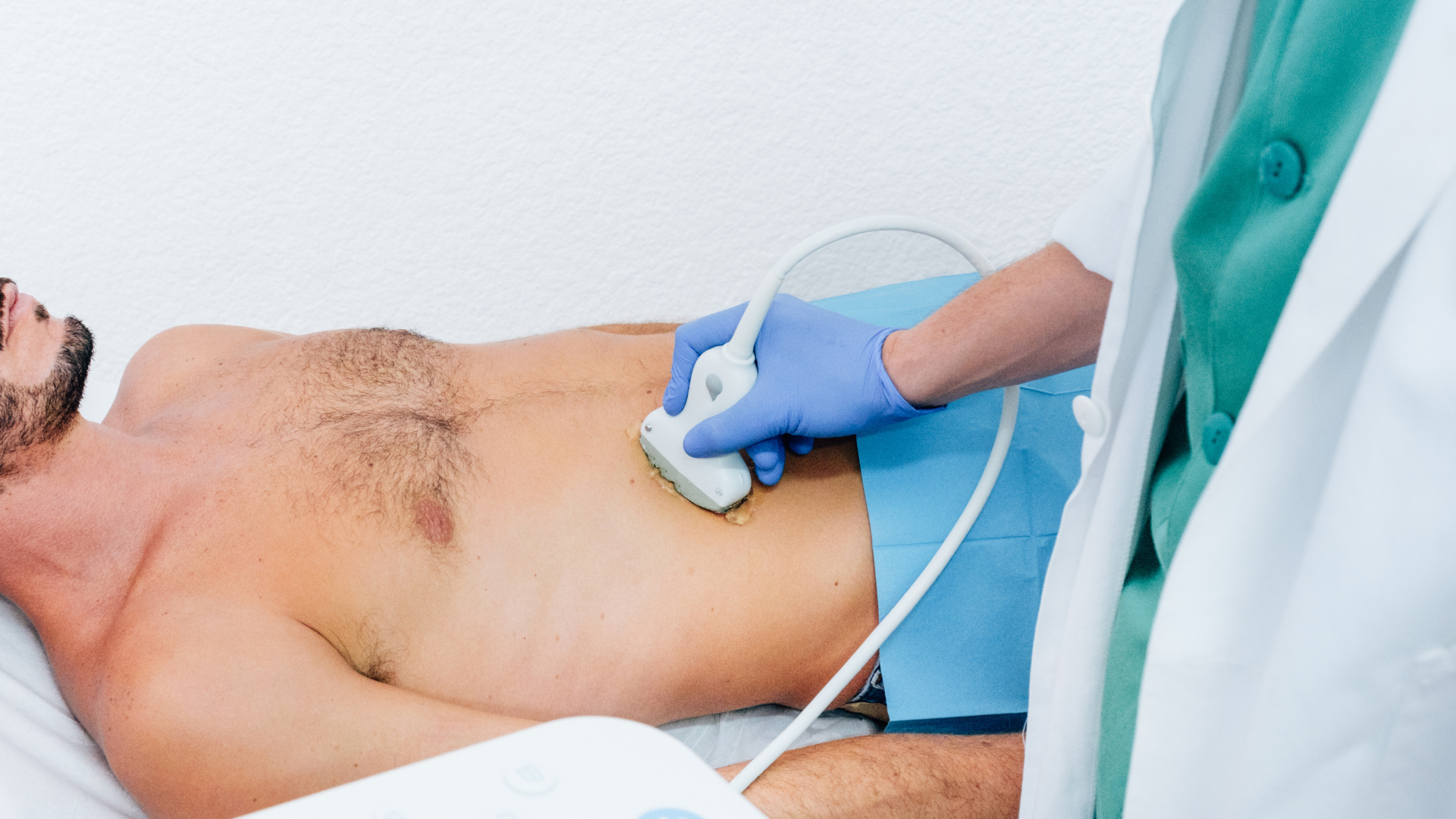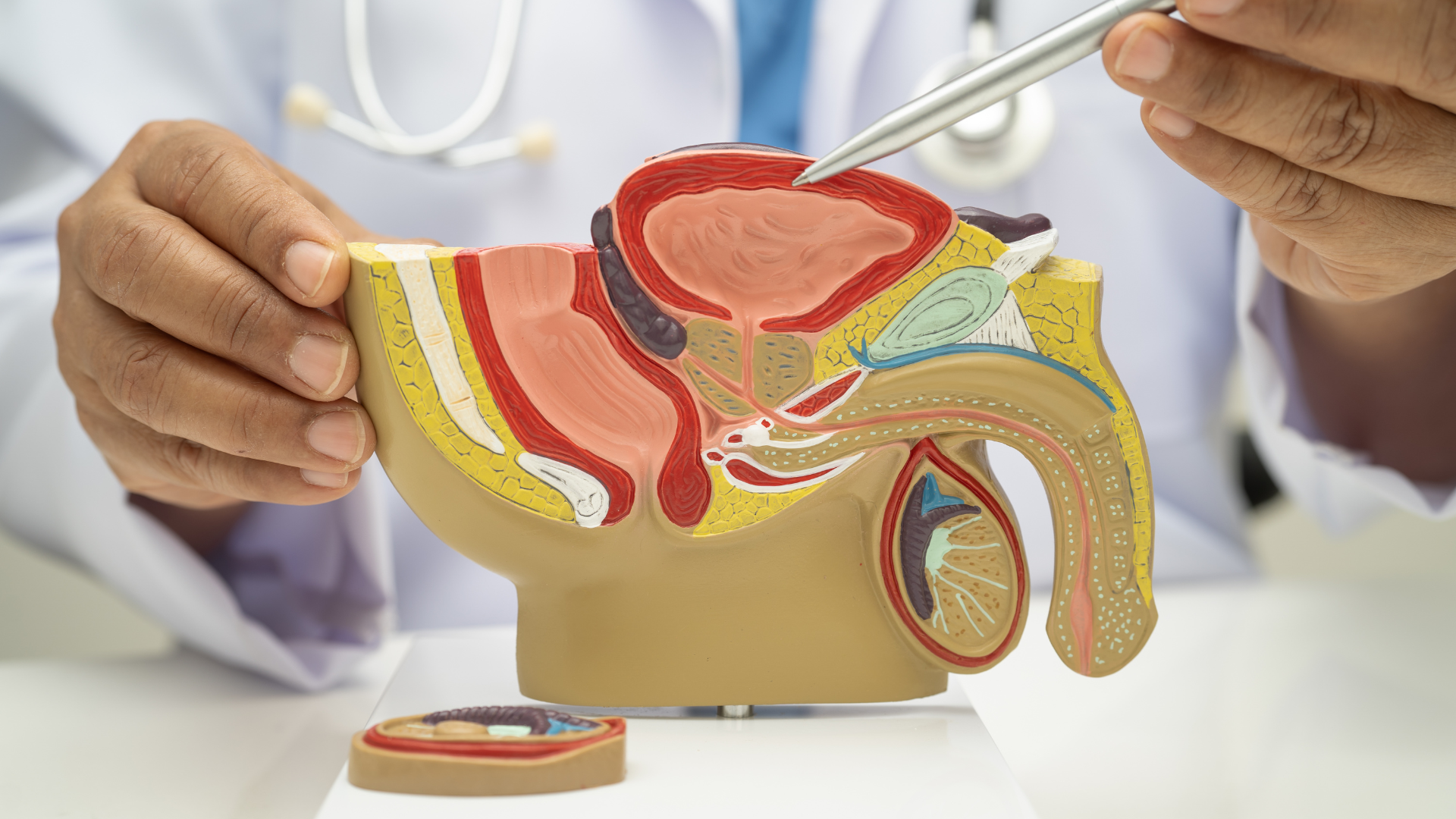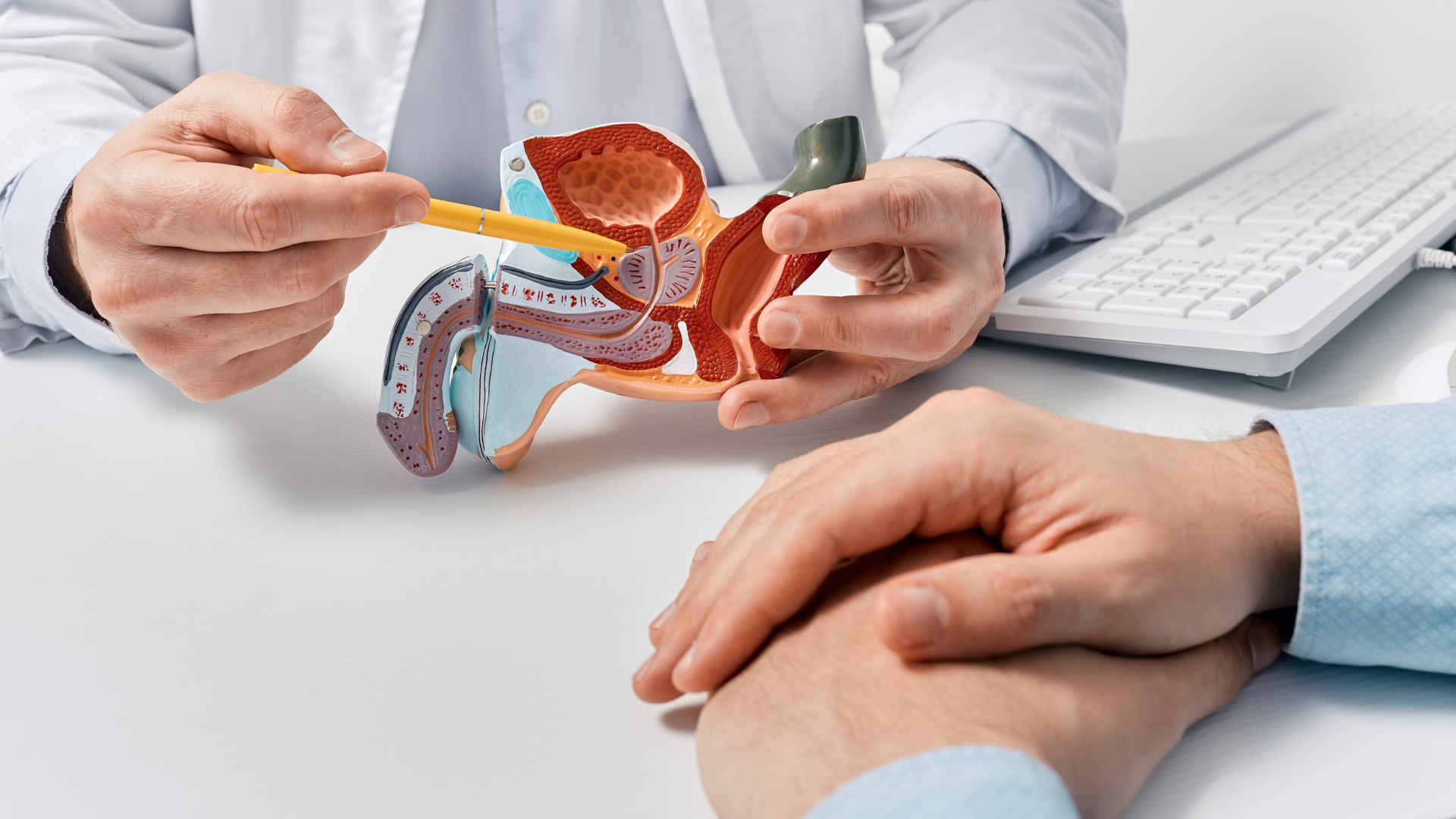
Saturday: 10 am - 1 pm
Radiation Therapy for Prostate Cancer: Advances and Patient Outcomes
Radiation therapy for prostate cancer, including EBRT and brachytherapy, effectively targets cancer cells while minimizing damage to healthy tissue. Proper management of side effects and follow-up care are crucial for patient recovery and long-term health.
What Are the 5 Warning Signs of Prostate Cancer You Shouldn't Ignore?
Prostate cancer is common in men, but many are unaware of early symptoms like urinary changes or persistent pain. Early detection improves treatment outcomes, especially for men over 50 or with a family history.
Proton Therapy for Prostate Cancer: Advancements and Outcomes
Proton therapy is a precise treatment for prostate cancer that minimizes damage to healthy tissues, reduces side effects, and improves quality of life.
Prostate Cancer Stages: Understand the Progression and Treatment Options
Meet the outlines the stages of prostate cancer, from early detection to advanced stages, and describes treatment options based on severity, emphasizing the importance of proper diagnosis and management.
Stage 4 Prostate Cancer Symptoms: Understanding Advanced Warning Signs
Stage 4 prostate cancer is characterized by the spread of cancer to other parts of the body, causing symptoms such as bone pain, urinary problems, fatigue, and weight loss.
Stage 1 Prostate Cancer Symptoms: Early Detection and Key Indicators
Stage 1 prostate cancer often has no symptoms, making regular screenings like PSA tests and digital rectal exams crucial for early detection.
Prostate Cancer Surgery: Advances in Treatment Techniques
Prostate cancer surgery, including radical, laparoscopic, and robotic-assisted techniques, requires careful preparation and recovery to manage complications like incontinence and erectile dysfunction for successful treatment.
What Is the Role of Phosphorylation in Prostate Cancer Progression and Treatment?
Phosphorylation influences the growth and progression of prostate cancer by regulating cellular signaling pathways. Its study could lead to new treatments and improve diagnosis, providing better therapeutic options for patients.
What is the Role of Demethylation in Prostate Cancer Development and Progression?
Demethylation is key in the development and progression of prostate cancer, regulating gene expression and affecting cell behavior. Abnormal methylation patterns can promote tumor growth and resistance to treatments. Demethylation research seeks to identify new therapies aimed at these mechanisms, offering promising prospects for treatment and improving patient outcomes.
How to Check for Prostate Cancer at Home: A Guide to Early Detection
Men often worry about their health, especially when it comes to prostate cancer. One way to take control of their health is by knowing how to check for prostate cancer at home. Understanding personal risk factors and early detection methods can empower men to seek timely medical advice if needed.
Does Benign Prostatic Hyperplasia Lead to Cancer: Understanding the Risks
Benign Prostatic Hyperplasia (BPH) is a non-cancerous enlargement of the prostate that causes urinary symptoms. Although it is not related to prostate cancer, both conditions can coexist. Treatment includes medications, lifestyle changes, and, in some cases, surgery. Regular follow-ups are important to manage symptoms and improve quality of life.
More From Other Categories
Urodynamics: what medications should be avoided before the test
Some medications may alter the results of urodynamics. In this blog, we'll tell you what you should avoid before the test, why they can interfere with bladder evaluation, and how to properly prepare for an accurate and reliable diagnosis.
Urodynamics: A Complete Guide to Bladder Diagnosis and Evaluation
Urodynamics is a key test for evaluating the functioning of the bladder and lower urinary tract. In this blog we offer you a complete guide on how it is performed, what conditions it helps to diagnose and how to interpret its results for a more accurate treatment.
Urodynamic Procedure: Clear Guide to Diagnosis and Effective Treatment
The urodynamic test evaluates how the bladder and urethra work. In this blog, we explain what the procedure consists of, how it is performed, what results it offers and how it contributes to the diagnosis and treatment of urinary problems. A clear and useful guide for patients.
How long does a transperineal prostate biopsy last: we explain the process to you
The transperineal prostate biopsy lasts 20 to 40 minutes and is performed under anesthesia. In this blog, we explain step by step what the procedure is like, how long it takes to recover and what to expect before, during and after the study so that you arrive prepared and calm.
Learn more about transperineal prostate biopsy in Mexico
Transperineal prostate biopsy is an accurate diagnostic method, with a lower risk of infection compared to the transrectal approach. In Mexico, prostate cancer is one of the leading causes of male mortality, and this guided procedure allows multiple samples to be obtained from the perineum to improve cancer detection
Transperineal prostate biopsy: safe and accurate method for early diagnosis
Transperineal prostate biopsy is an advanced technique that allows obtaining precise samples of prostate tissue with a lower risk of infection. In this blog, we explain how it is done, its advantages over other methods and why it is key to an early diagnosis of prostate cancer.
What is a cystoscopy? Procedure Guide
Cystoscopy is a procedure that allows you to look inside the bladder and urethra to diagnose or treat urinary conditions. In this blog, we explain what it consists of, how it is done, what discomfort you may feel and what to expect before, during and after the study.
Transabdominal ultrasound for prostate: procedure and clinical applications
Transabdominal prostate ultrasound is a non-invasive technique used to evaluate prostate size, shape and possible prostate anomalies. In this blog, we explore how the procedure is performed, what can be diagnosed with it and in which clinical cases its use is recommended. Ideal for patients looking to understand this key diagnostic tool.
How a prostate ultrasound is done: procedure and preparation
Learn step by step how a prostate ultrasound is performed, what type of images are obtained and how you should prepare for the exam. This article provides a clear and comprehensive guide for patients seeking to understand the process and arrive at their prostate exam with peace of mind.
Prostate ultrasound: What you need to know about the procedure and results
Prostate ultrasound is a key tool for evaluating prostate health. In this blog, we explain what the procedure consists of, how it is interpreted, what results you can expect and when it is recommended. A clear guide for patients looking for reliable information.
Uroflowmetry: what is it and what can you expect from this procedure?
Uroflowmetry is a simple, non-invasive test that measures urine flow to evaluate potential urinary problems. In this blog, we'll tell you what it is, how to prepare, what the results mean and what to expect during the procedure. Ideal for clarifying common questions.
Is HoLEP surgery high-risk? : Make an informed decision
Are you considering HoLEP surgery? In this blog we explain what it consists of, what are its real risks, benefits and factors to consider before making a decision. Get a clear, evidence-based vision to decide with confidence with your specialist.
Postoperative symptoms after HoLEP surgery
After HoLEP surgery, it's common to experience certain temporary symptoms during recovery. In this blog, we explain the most common post-operative effects, how long they last, when to see a doctor and how to properly manage the recovery process.
Understanding the success rate of HoLEP surgery in treating prostate hyperplasia
HoLEP surgery is an effective option for treating benign prostatic hyperplasia. In this blog, we analyze their success rate, factors that influence outcomes, treatment durability, and what patients can expect in the short and long term. Clear, evidence-based information.
Post-Surgical Diet After HoLEP Laser Surgery Guidelines for Optimal Recovery
After HoLEP laser surgery, diet plays a critical role in supporting recovery and minimizing complications. A balanced diet rich in lean proteins, vegetables, and fluids is essential to promote healing and maintain overall strength after the procedure. Patients are generally encouraged to return to their normal diet as tolerated but should avoid heavy or hard-to-digest foods initially to reduce nausea and discomfort.
Long-Term Benefits of Choosing HoLEP: An Effective and Lasting Treatment
Holmium Laser Enucleation of the Prostate (HoLEP) is a surgical technique increasingly recognized for its long-term effectiveness in treating benign prostatic hyperplasia (BPH). Its ability to remove significant prostate tissue while minimizing risks offers patients lasting relief from urinary symptoms associated with prostate enlargement. HoLEP provides durable improvements in urinary function and quality of life, making it a reliable option for sustained symptom management.
Can HoLEP Laser Surgery Cure BPH Effectively, and What to Expect
Benign prostatic hyperplasia (BPH), commonly known as an enlarged prostate, causes uncomfortable urinary symptoms and can significantly impact daily life. Holmium laser enucleation of the prostate (HoLEP) is a surgical option designed to remove prostate tissue that blocks urine flow. HoLEP can effectively treat BPH by removing the obstructive prostate tissue, providing a lasting solution for many patients.
How to Prepare for HoLEP Laser Surgery: Essential Steps for a Smooth Recovery
Preparing for HoLEP laser surgery involves several important steps to ensure the procedure goes smoothly and safely. The most crucial part of preparation is following your surgeon’s instructions on fasting, medication, and arrival times to reduce risks and complications. Patients should also arrange for someone to drive them home after the surgery, as they won’t be able to drive themselves.
Does HoLEP Laser Surgery Improve Urinary Symptoms? A Clinical Effectiveness Overview
Holmium Laser Enucleation of the Prostate (HoLEP) is a surgical technique used to treat urinary symptoms caused by an enlarged prostate. This procedure effectively improves urine flow and reduces symptoms such as frequent urination, urgency, and nighttime waking. By removing excess prostate tissue that blocks the urethra, HoLEP helps relieve the obstruction that causes these bothersome issues.
HoLEP Laser Surgery and Erectile Function: What Patients Need to Know
HoLEP laser surgery is a common treatment for enlarged prostate issues, offering effective relief with minimally invasive techniques. Many patients worry about how this procedure might affect erectile function, a key concern when considering surgery.
Is HoLEP Laser Surgery Right for You? Understanding Benefits, Risks, and Suitability
HoLEP (Holmium Laser Enucleation of the Prostate) is a minimally invasive surgical option designed to treat benign prostatic hyperplasia (BPH), a common condition causing urinary difficulties in men. It is especially effective for removing large amounts of prostate tissue without external incisions, making it a strong choice for those with significant prostate enlargement.
HoLEP Procedure vs. TURP: Effectiveness and Safety Comparison
While TURP is still valid for selected cases, HoLEP offers significant advantages in safety, long-term efficacy and recovery. At Precision Prostate Clinic (leaders in HoLEP in Latin America), we perform this procedure with cutting-edge technology and proven experience to guarantee the best results.
How long does a HoLEP procedure last? Average time and considerations
The HoLEP stands out for its precision, safety and long-term results, with a relatively short surgical time considering its benefits. At Precision Prostate Clinic (leaders in HoLEP in Latin America), we optimize each stage of the process to offer maximum efficiency and personalized care.
HoLEP procedure for prostate: innovation in the treatment of prostatic hyperplasia
HoLEP (Holmium Laser Prostatic Enucleation) is the current gold standard for treating benign prostatic hyperplasia (BPH), standing out for its precision, minimal invasion and long-lasting results.
Cost of the HoLEP Procedure: What You Need to Know
HoLEP (Holmium Laser Prostatic Enucleation) is an effective and cost-effective treatment for benign prostatic hyperplasia (BPH), with economic advantages over other surgical options. At Precision Prostate Clinic (leaders in HoLEP in Latin America), we combine cutting-edge technology, expertise and financial transparency to offer the best value in prostate health.
HoLEP procedure: innovative technique for the treatment of prostatic hyperplasia
HoLEP (Holmium Laser Prostatic Enucleation) is a revolutionary advance in the treatment of benign prostatic hyperplasia (BPH), standing out as a minimally invasive alternative to traditional techniques such as TURP.
Blood Clots After HoLEP Surgery: Prevention and Effective Management
HoLEP (holmium laser prostatic enucleation) surgery is a safe procedure for treating benign prostatic hyperplasia, but some patients may develop blood clots during recovery.
Recovery from HoLEP surgery: times, care and expectations
HoLEP (Holmium Laser Prostatic Enucleation) surgery is a minimally invasive treatment for benign prostatic hyperplasia (BPH). Recovery is usually quick, with most patients resuming light activities within a few days.
What Is Benign Prostatic Hyperplasia? Understanding Its Causes and Treatments
Benign prostatic hyperplasia (BPH) is the non-cancerous enlargement of the prostate gland, common in older men, that can cause urinary problems. Symptoms include frequent urination, difficulty starting or stopping urine flow. It's important to recognize these signs early to avoid complications. There are several treatment options that can improve urinary function and the quality of life of those who suffer from it.
What Are the Symptoms of Benign Prostatic Hyperplasia: A Comprehensive Overview
Benign prostatic hyperplasia (BPH) is a common condition in older men, characterized by an enlarged prostate. Its symptoms include frequent urination, difficulty initiating urine flow, and a weak stream, affecting quality of life. Early detection is key to avoiding complications such as urinary tract infections and bladder stones. Recognizing these signs makes it possible to seek appropriate treatment and improve well-being.
What Causes Benign Prostatic Hyperplasia: Understanding the Factors Behind This Common Condition
Benign prostatic hyperplasia (BPH) is a common condition in aging men, caused by prostate cell growth due to hormonal changes, particularly lower testosterone levels. This enlargement can obstruct urine flow, leading to urinary issues. Factors like age, ethnicity, and weight influence its development. Early recognition of symptoms allows for timely treatment and better health management.
Benign Prostatic Hyperplasia Risk Factors: Understanding Key Contributors to Men’s Health
Benign prostatic hyperplasia (BPH) is common in older men and can cause urinary problems. Factors such as age, family history, and lifestyle influence its development. Recognizing symptoms and risks allows for early management and improves quality of life.
Does an Enlarged Prostate Affect a Man Sexually: Understanding the Impact
An enlarged prostate can affect sexual health, causing erectile dysfunction, decreased libido, and ejaculation problems. Treatments for BPH may have side effects, but lifestyle changes and medical consultations can help manage symptoms and improve quality of life.
What Are the Symptoms of Benign Prostatic Hyperplasia: A Detailed Overview
Benign Prostatic Hyperplasia (BPH) is a non-cancerous enlargement of the prostate that affects older men, causing urinary symptoms such as difficulty urinating and frequent urges, especially at night. Early diagnosis and appropriate treatment, which may include medication or surgery, are key to improving quality of life.
Can Enlarged Prostate Cause Blood in Urine: Understanding the Link
Prostate enlargement can cause urinary problems, including blood in the urine. This occurs due to pressure on the urethra and bladder, damaging blood vessels. Treatments range from medications to procedures such as transurethral resection or laser surgery. Early diagnosis is key to improving quality of life.
How BPH is Diagnosed: Essential Tests and Procedures
Benign Prostatic Hyperplasia (BPH) is the non-cancerous enlargement of the prostate in older men. Its diagnosis includes medical history, physical exams, and tests such as ultrasounds and urine flow analysis to confirm the condition and plan treatment.
How to Treat Benign Prostatic Hyperplasia
Benign Prostatic Hyperplasia (BPH) is a non-cancerous enlargement of the prostate that causes urinary symptoms such as frequent urination or weak flow. Treatments range from lifestyle changes and medications to minimally invasive procedures or surgery. Consulting a doctor is key to preventing complications.
Benign Prostatic Hyperplasia Foods to Avoid: Dietary Tips for Better Prostate Health
Benign prostatic hyperplasia (BPH) is a non-cancerous enlargement of the prostate that affects quality of life due to urinary symptoms. Avoiding foods like red meat, fatty dairy, and salty meals, while opting for a healthy diet, can relieve symptoms and improve well-being.



















































